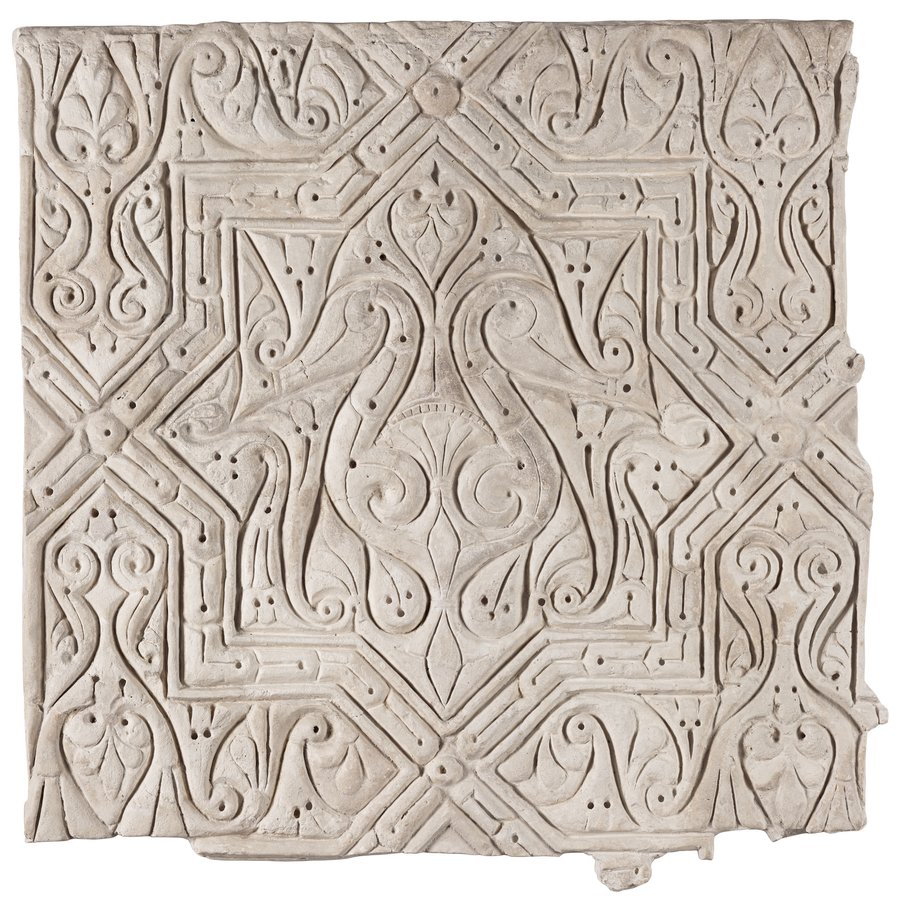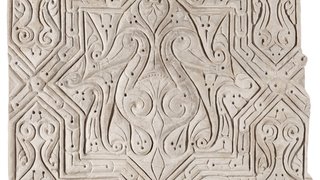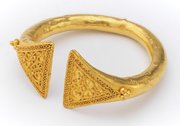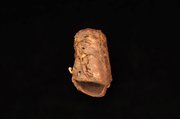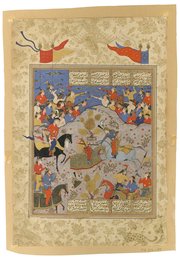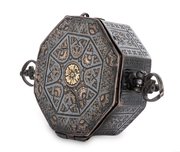
Architectural Wall Decoration
- Title:
- Architectural Wall Decoration
- Date:
- 833 - 847
- Title:
- Architectural Wall Decoration
- Date:
- 833 - 847
- Dimensions:
- 106.5 × 106.5 × 8 cm
This dado panel is one of a group of fine stucco wall revetments that originally came from the site of Samarra (approximately 120 km north of Baghdad), the short-lived yet extraordinary Abbasid capital that functioned as a caliphal seat during most of the 2nd–3rd centuries AH/9th century CE. Stucco rose to major prominence when the early Abbasid caliphs designed their new luxurious palaces. This example shows the exquisite carving, featuring geometric interlaced bands, producing large eight-pointed stars, filled with stylised plant motifs. The craftsman seemed particularly talented in executing the details with great accuracy. The decoration of this stucco panel belongs to what is generally known as the characteristic ‘Samarra style C’, or ‘bevelled style’, believed to have spread as a new visual language from Samarra to other centres of the Abbasid Empire.
